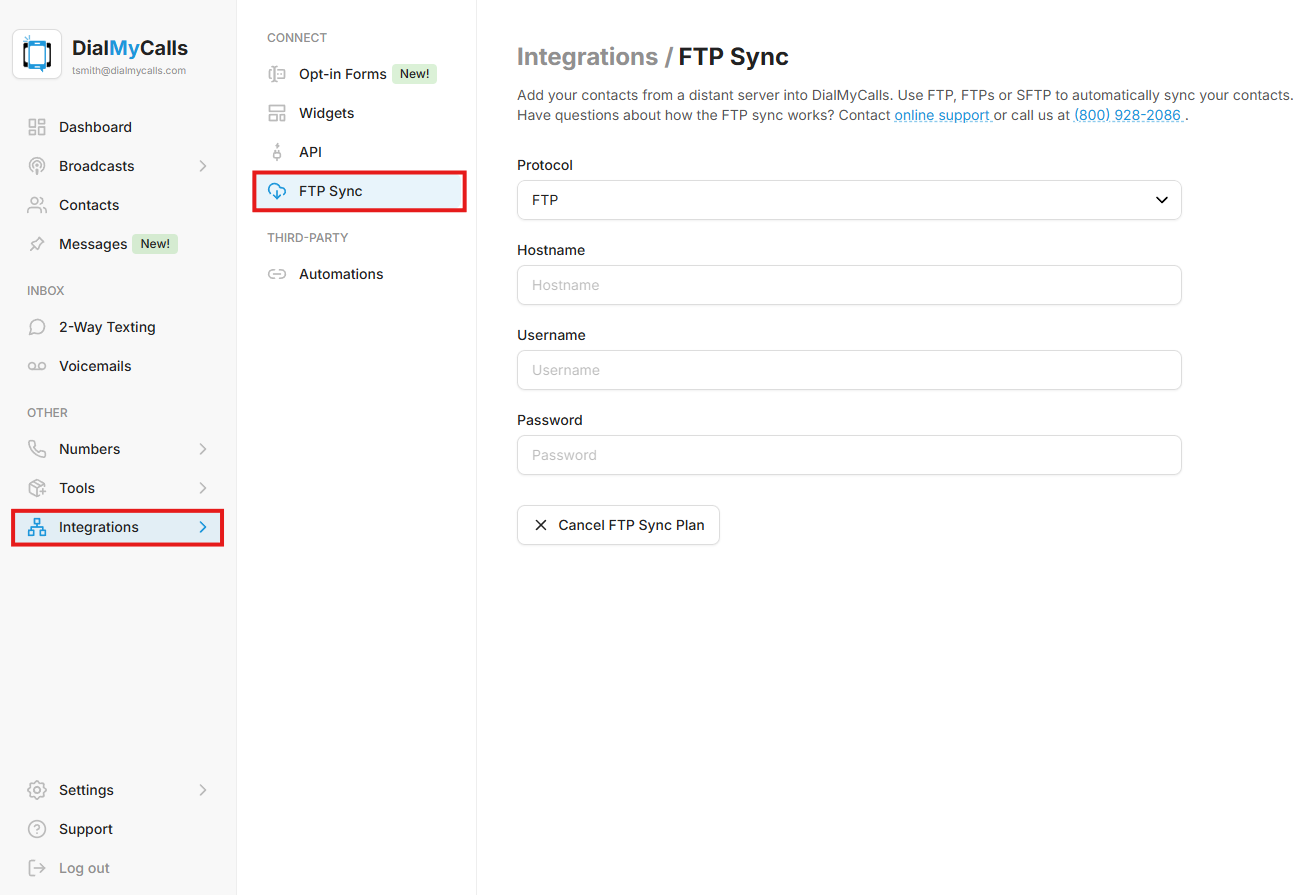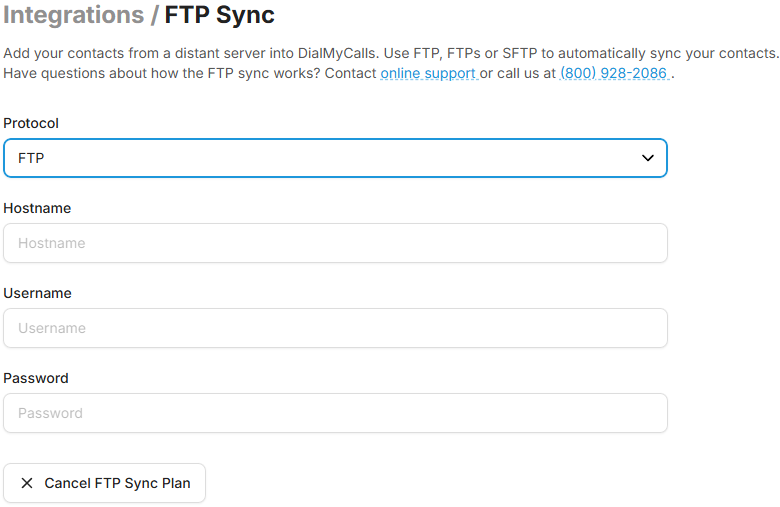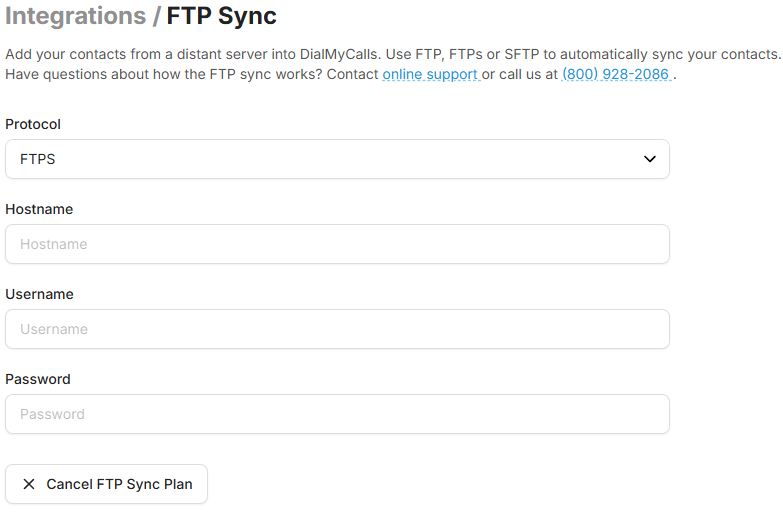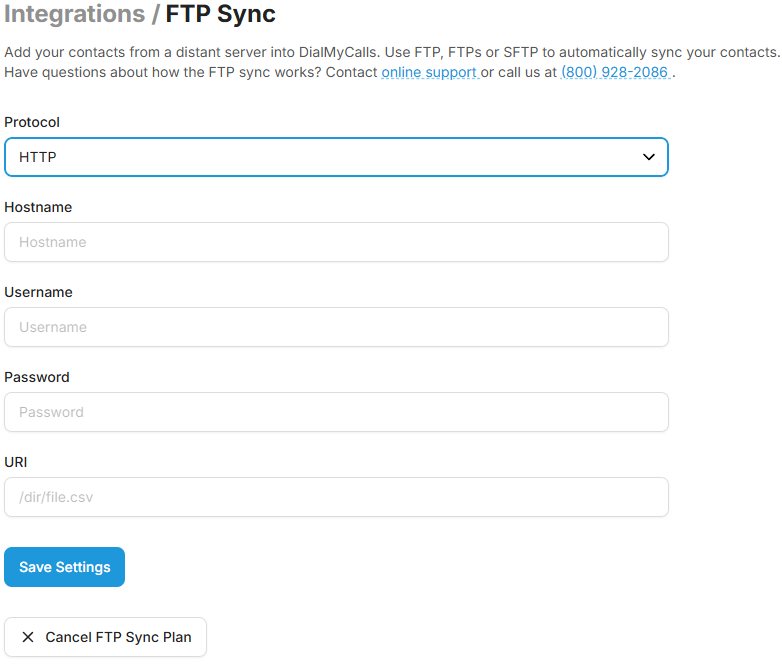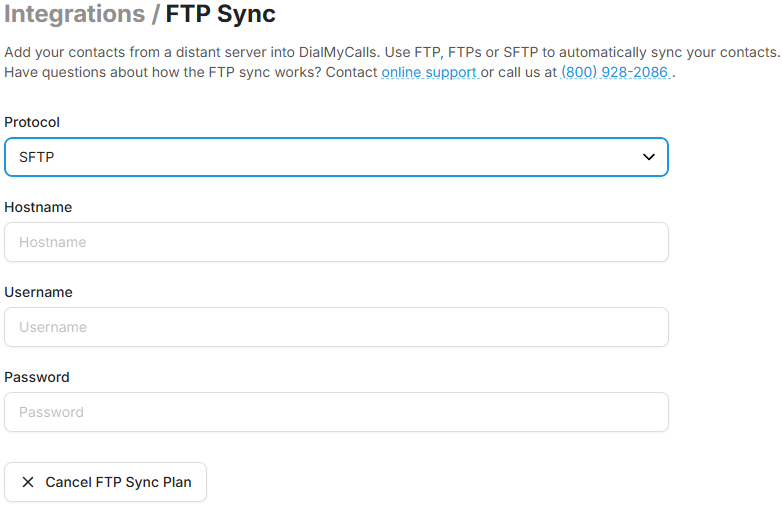- Home
- Features
- Integrations
- FTP Sync Integration
Sync Your Contacts via FTP
DialMyCalls offers an FTP sync integration that makes it easy to keep your contact lists up to date.
What Is FTP?
FTP (File Transfer Protocol) is a simple way to move files from one computer or system to another over the internet. It’s like a digital delivery service that lets you upload or download files—such as spreadsheets or documents—quickly and securely. Many businesses use FTP to automate tasks like updating contact lists or sharing data between systems without needing to do it manually.
Why Choose Our FTP Integration?
Instead of manually uploading a .CSV file every time your list changes, you can send your file to a secure FTP server, and DialMyCalls will automatically sync your contacts with your account. This means your contact list is always ready for sending mass notifications via phone call, text message or email broadcast without any extra steps.
Stay Connected with Mass Notifications
Create & Send a Broadcast to Thousands in Seconds
Our FTP integration is perfect for schools, businesses, or any organization that updates contacts regularly. It’s fast, reliable, and secure—saving you time and reducing the chance of errors. With FTP integration, you can automate your workflow and focus on what matters most while we handle the contact syncing in the background.
How To Use DialMyCalls’ FTP Sync
To get started with our FTP Integration, log into your DialMyCalls account and click on “Integrations” -> “FTP Sync”. To use this integration you will need to pay $25 per month – paying this fee will unlock the ability to sync your contact lists with DialMyCalls via FTP.
FTP Sync Protocols
- FTP (File Transfer Protocol)
- FTPS (FTP Secure)
- HTTP (Hypertext Transfer Protocol)
- HTTPS (Secure HTTP)
- SFTP (Secure File Transfer Protocol)
Once you’ve activated FTP Sync, you will need to choose the type of connection you will be using to sync with DialMyCalls – we offer the following protocols:
FTP (File Transfer Protocol)
FTP is a basic way to send files from your computer to another system over the internet. To use it, you just need the server’s address (called the hostname), plus a username and password to log in. It’s easy to use but doesn’t have built-in security.
FTPS (FTP Secure)
FTPS works just like FTP but adds a layer of security to protect your files while they’re being transferred. You still use a hostname, username, and password—but everything is sent through a secure connection.
HTTP (Hypertext Transfer Protocol)
HTTP is commonly used to send and receive information over the internet—like when you visit a website or send data to a service. You need the website address (hostname), a username and password if it’s private, and a “URI” which tells the system where to send or get the data.
HTTPS (Secure HTTP)
HTTPS is the safer version of HTTP. It protects your data so no one else can see it while it’s being sent. You use it the same way—with a hostname, username, password, and URI—but the connection is encrypted for extra security.
SFTP (Secure File Transfer Protocol)
SFTP is a very secure way to send files online. It protects your data while it’s being transferred, making it a great choice for sensitive information. All you need is the server address (hostname), your username, and password to get started.
Now that you have made the connection using one of the protocols above, make sure that you have your .CSV uploaded so that DialMyCalls is able to grab your data and populate your contacts.
Sync Your Contacts With DialMyCalls Today!
That’s It! Your contacts will now automatically sync with the .CSV file that you have uploaded to your FTP. You can now log into DialMyCalls and send out a phone call, text message or email broadcast to all of your synced contacts.
If you need any help with our FTP Sync integration or have questions about your account, please contact us today!
Maximize Outreach, Save Time
Start Transforming Your Communication with Mass Texting
- Home
- Features
- Integrations
- FTP Sync Integration
More Integrations
Try Using DialMyCalls Right Now
Start For Free
